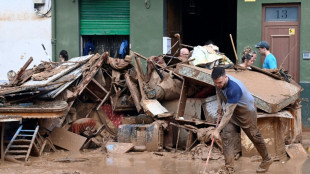
-
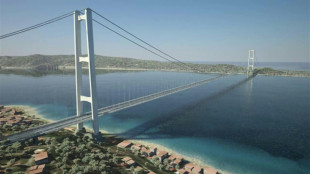 Italy court stalls Sicily bridge, triggers PM fury
Italy court stalls Sicily bridge, triggers PM fury
-
Marseille midfielder Nadir stable after on-pitch collapse

-
 Saudis turned down Messi stint ahead of 2026 World Cup, says official
Saudis turned down Messi stint ahead of 2026 World Cup, says official
-
Novo Nordisk launches bidding war with Pfizer for obesity drugmaker Metsera
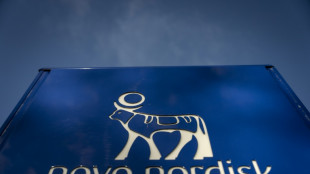
-
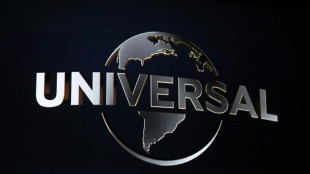 Universal says struck first licensing deal for AI music
Universal says struck first licensing deal for AI music
-
France arrests five new suspects over Louvre heist: prosecutor
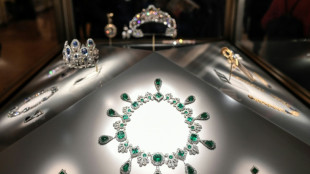
-
 Record Vietnam floods kill 10, turn streets into canals
Record Vietnam floods kill 10, turn streets into canals
-
Trump orders US to start nuclear weapons testing

-
 'Significant' Xi, Trump talks win cautious optimism in China
'Significant' Xi, Trump talks win cautious optimism in China
-
French justice minister visits jailed former president Sarkozy

-
 Eurozone growth beats expectations in third quarter
Eurozone growth beats expectations in third quarter
-
Bali trial begins for 3 accused of Australian's murder

-
 Dutch election a photo finish between far-right, centrists
Dutch election a photo finish between far-right, centrists
-
IOC removes Saudi Arabia as host of inaugural Esports Olympics

-
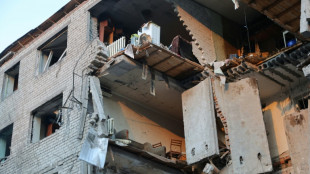 Russia batters Ukraine energy sites, killing two
Russia batters Ukraine energy sites, killing two
-
Shell's net profit jumps despite lower oil prices
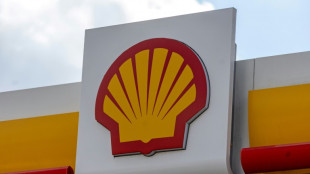
-
 Pakistani security source says Afghanistan talks 'likely' to resume
Pakistani security source says Afghanistan talks 'likely' to resume
-
Fentanyl, beans and Ukraine: takeaways from Trump-Xi's 'great meeting'
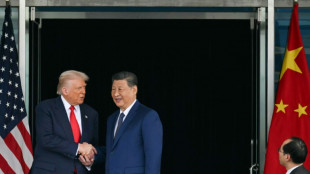
-
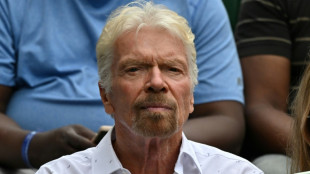 Branson's Virgin moves closer to launching Eurostar rival
Branson's Virgin moves closer to launching Eurostar rival
-
Russia hits Ukraine energy sites, killing one, wounding children
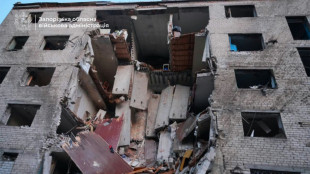
-
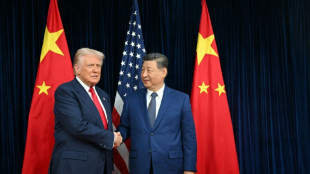 Asia markets fluctuate as investors mull Trump-Xi talks
Asia markets fluctuate as investors mull Trump-Xi talks
-
Trump, Xi ease fight on tariffs, rare earths
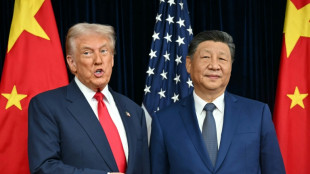
-
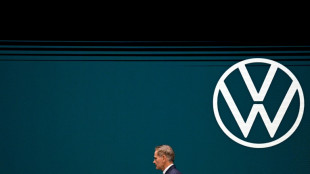 Volkswagen posts 1-billion-euro loss on tariffs, Porsche woes
Volkswagen posts 1-billion-euro loss on tariffs, Porsche woes
-
'Fight fire with fire': California mulls skewing electoral map

-
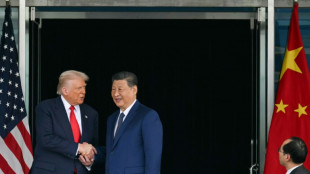 Fentanyl, beans and Ukraine: Trump hails 'success' in talks with Xi
Fentanyl, beans and Ukraine: Trump hails 'success' in talks with Xi
-
'Nowhere to sleep': Melissa upends life for Jamaicans
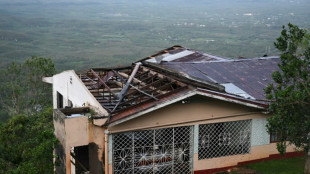
-
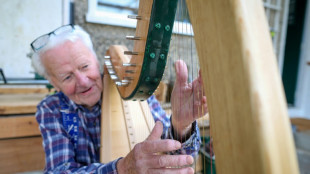 Irish octogenarian enjoys new lease on life making harps
Irish octogenarian enjoys new lease on life making harps
-
Tanzania blackout after election chaos, deaths feared

-
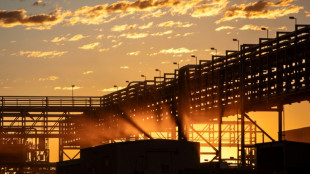 G7 meets on countering China's critical mineral dominance
G7 meets on countering China's critical mineral dominance
-
Trump hails tariff, rare earth deal with Xi
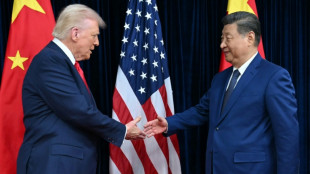
-
 Court rules against K-pop group NewJeans in label dispute
Court rules against K-pop group NewJeans in label dispute
-
India's Iyer says 'getting better by the day' after lacerated spleen

-
 Yesavage fairytale carries Blue Jays to World Series brink
Yesavage fairytale carries Blue Jays to World Series brink
-
Bank of Japan keeps interest rates unchanged
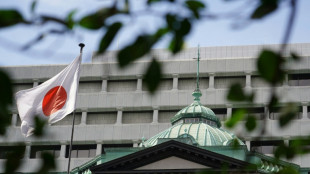
-
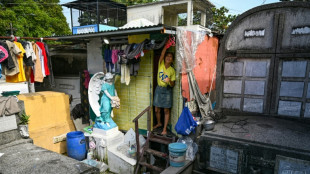 Impoverished Filipinos forge a life among the tombstones
Impoverished Filipinos forge a life among the tombstones
-
Jokic posts fourth straight triple-double as Nuggets rout Pelicans

-
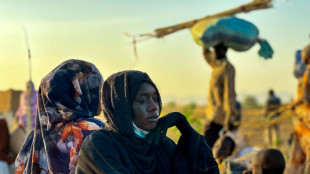 UN calls for end to Sudan siege after mass hospital killings
UN calls for end to Sudan siege after mass hospital killings
-
Teenage Australian cricketer dies after being hit by ball

-
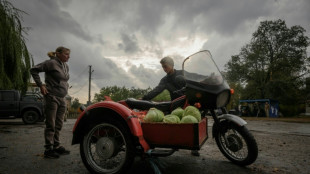 As Russia advances on Kupiansk, Ukrainians fear second occupation
As Russia advances on Kupiansk, Ukrainians fear second occupation
-
Trade truce in balance as Trump meets 'tough negotiator' Xi
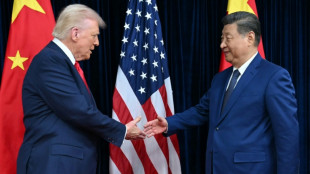
-
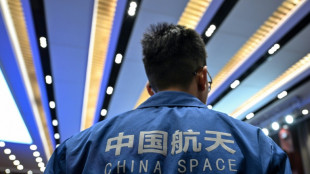 China to send youngest astronaut, mice on space mission this week
China to send youngest astronaut, mice on space mission this week
-
Yesavage gem carries Blue Jays to brink of World Series as Dodgers downed

-
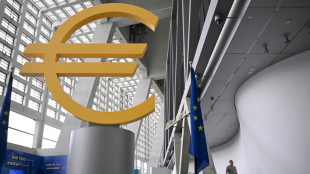 With inflation under control, ECB to hold rates steady again
With inflation under control, ECB to hold rates steady again
-
Asia stocks muted with all eyes on Trump-Xi meeting
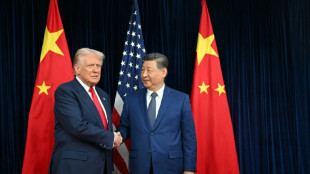
-
 Personal tipping points: Four people share their climate journeys
Personal tipping points: Four people share their climate journeys
-
Moto3 rider Dettwiler 'no longer critical' after crash: family

-
 US economy in the dark as government shutdown cuts off crucial data
US economy in the dark as government shutdown cuts off crucial data
-
Trump orders nuclear testing resumption ahead of Xi talks

-
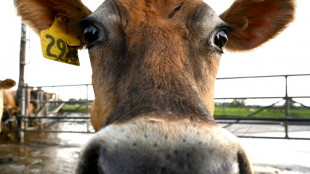 'Utter madness': NZ farmers agree dairy sale to French group
'Utter madness': NZ farmers agree dairy sale to French group
-
Samsung posts 32% profit rise on-year in third quarter


Rock on: how crushed stone could help fight climate change
From sugar plantations in Brazil to tea estates in India, crushed rock is being sprinkled across large stretches of farmland globally in a novel bid to combat climate change.
The technique is called Enhanced Rock Weathering (ERW) and aims to speed up the natural capture and storage of carbon dioxide -- a planet-warming greenhouse gas.
It is potentially big business with tech giants, airlines and fast fashion firms lining up to buy carbon credits from ERW projects to "offset" or cancel out their own emissions.
- What is ERW? -
ERW aims to turbocharge a natural geological process called weathering.
Weathering is the breakdown of rocks by carbonic acid, which forms when carbon dioxide in the air or soil dissolves into water.
Weathering occurs naturally when rain falls on rocks, and the process can lock away carbon dioxide from the air or soil as bicarbonate, and eventually limestone.
ERW speeds the process up by using quick-weathering rocks like basalt that are ground finely to increase their surface area.
- How effective is ERW? -
ERW is still a fairly new technology and there are questions about how much carbon it can remove.
One US study found applying 50 tonnes of basalt to a hectare of land each year could remove up to 10.5 tonnes of carbon dioxide per hectare over a four-year period.
But scientists applying basalt to oil palm fields in Malaysia and sugarcane fields in Australia measured much lower removal rates.
"Field trials are showing that there have been overestimates of the amount and rate captured," said Paul Nelson, a soil scientist at James Cook University who has studied ERW.
Rates depend on variables including rock type and size, how wet and hot the climate is, soil type and land management.
And measuring the carbon captured is difficult.
The most popular technique measures "cations", positively charged ions that are released from the rock during weathering.
But those cations are produced regardless of which acid the rock has reacted with.
"If there are stronger acids than carbonic, then it will react with those," said Nelson, so measurable cations are produced even when carbon dioxide is not captured.
That doesn't mean ERW is pointless, said Wolfram Buss, a researcher on carbon dioxide removal at the Australian National University, just that it needs to be carefully calibrated and measured.
"There is no doubt that this technique works," he said.
"However, to be sure how much carbon dioxide we actually remove, more funding is required to do fundamental studies."
- Are there other benefits? -
The added rock increases soil alkalinity, which can boost crop growth, soil nutrients and soil formation.
Basalt is both naturally abundant and often available as a byproduct of quarrying, lowering the costs of the process.
Experts note that even if the rock reacts with other acids in the soil, failing to lock away carbon dioxide at that stage, it can still have planetary benefits.
That is because acids in the soil would otherwise eventually wash into rivers and the sea, where acidification leads to the release of carbon dioxide.
If the rock neutralises that acid in the soil, "you've prevented carbon dioxide being released from the water into the atmosphere downstream", said Nelson.
The scale of those possible "prevented" emissions is not yet clear, however.
- What are the risks? -
ERW is broadly considered safe since it merely speeds up an existing natural process. However, some quick-weathering rocks have high levels of potentially poisonous heavy metals.
Scattering finely ground rock also requires appropriate protective gear for those involved.
But the main risk is that incorrect measurements overestimate captured carbon.
Some projects are already selling carbon credits from ERW. If a company buys an ERW credit to "offset" its emissions but the process captures less than projected, it could result in net higher carbon dioxide put into the atmosphere.
- Where is ERW being done? -
Projects are happening in most parts of the world, including Europe, North America, Latin America and Asia.
Earlier this year, a project in Brazil announced it had delivered the first-ever verified carbon-removal credits from an ERW project.
The process is being used or trialled in agricultural settings from tea plantations in India's Darjeeling to US soy and maize fields.
- What investor interest is there? -
An ERW startup -- Mati Carbon, working in India -- won the $50 million X Prize for carbon removal projects earlier this year.
In December, Google announced what was then the world's biggest ERW deal, for 200,000 tons of carbon removal credits, to be delivered by the early 2030s by startup Terradot.
The cost of the deal was not disclosed but a separate agreement by Terradot with a company representing firms including H&M sold 90,000 tons for $27 million.
R.Buehler--VB

